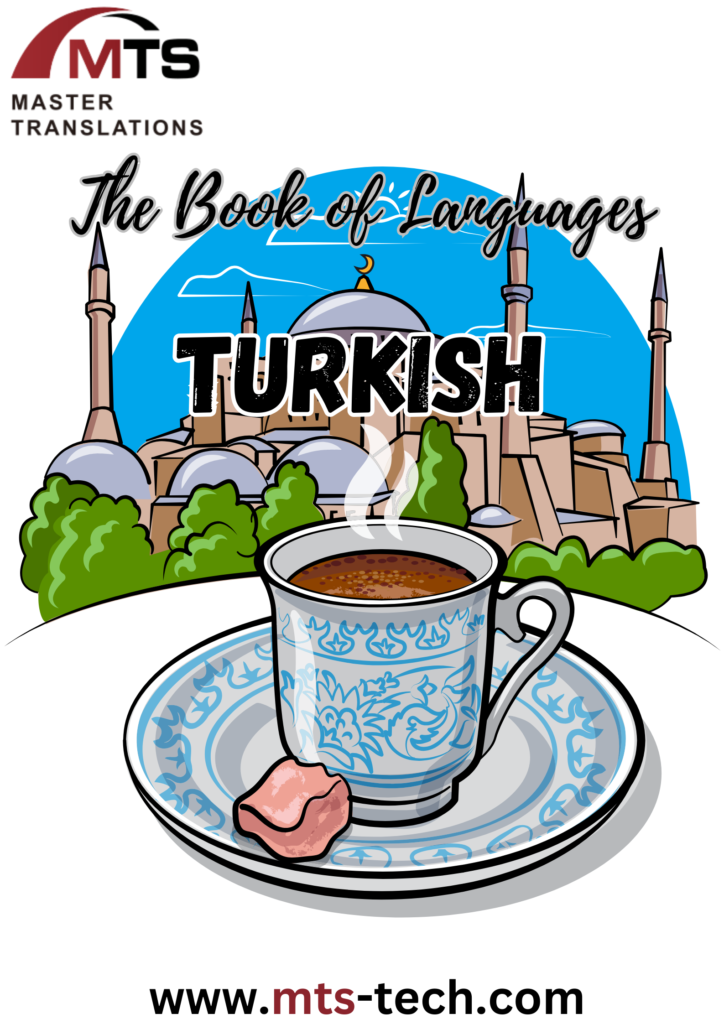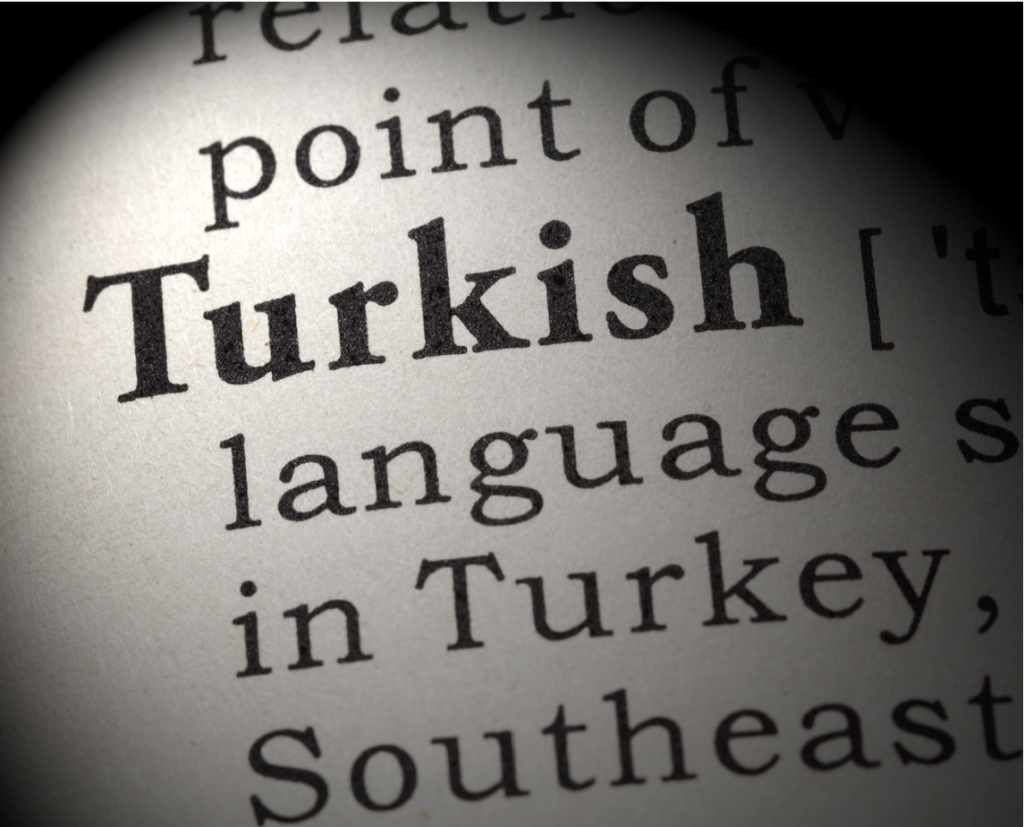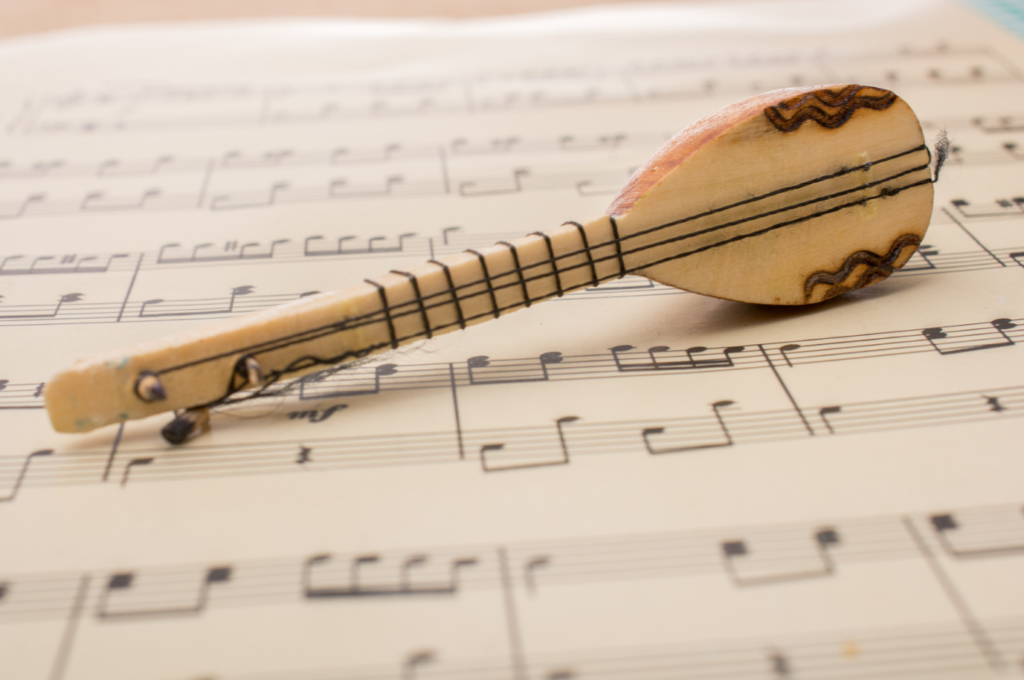
If languages were people, Turkish would be the globe-trotter, who’s also the life of the party! Spoken mainly in Turkey, Turkish has a charm that reaches far beyond its borders. With roots in Asia and a modern home in Europe, this language has a foot in two continents. It’s not just spoken; it’s lived, like the pulse of the bustling bazaars or the serenity of the Bosporus strait.
In Turkey, the language has also picked up some buddies along the way—words from Arabic, French, and even Italian. This makes Turkish a bit like a world buffet—there’s something for everyone.

Imagine if one day, someone changed the entire alphabet of your language. Well, that’s what happened in Turkey in 1928! The country’s founder, Mustafa Kemal Atatürk, switched the script from Arabic letters to Latin ones. Why? To make it easier for people to read and write. It was a supercharged makeover for a language that’s been around for centuries.
Before the change, Turkish had tons of Arabic and Persian words. After the change, it went on a “word diet” to become more Turkish and less of everything else. This “new look” for the language was all about embracing the future while nodding to the past.
Words!
First up, meet “yakamoz”—a word that describes the glow you see when something moves in the water at night. It’s the sea’s way of saying, “Hey, look at me!” Then there’s “gökkuşağı,” which literally means “sky belt” but is just a cool way to talk about a rainbow. And let’s not forget “hüzün”—a word that packs in a whole mood of shared sadness. Think of it as the blues, Turkish style.
Each of these words is a mini-story in itself. Turkish loves to smash simple words together to create new words with super-specific meanings. It’s like word LEGOs!
In Turkish, you can add little bits to a root word to create all-new meanings. For example, “ev” means house. Add a suffix, and you get “evde,” which means “in the house.” One word can become a whole sentence! Another cool thing? Turkish is super phonetic, meaning you say it how you see it. Spelling bee champs, this is your playground!
Let’s also talk about vowel harmony. Turkish vowels like to stick together in teams. In one word, if you start with a certain kind of vowel, the others usually match. It’s like they’re in harmony, making everything sound smooth and rhythmic.


Turkish Arts
Turkey’s got some major street cred in the literary world. Writers like Orhan Pamuk and Elif Shafak write stories that are more like lush, scenic road trips through Turkish life and language. And in music, Turkish is the star, from traditional folk tunes to pop hits.
Whether it’s in a book or a song, Turkish knows how to shine. The language’s built-in rhythm and melody turn every story and song into something that sticks with you.
So you want to learn Turkish? Buckle up! The language’s love for adding suffixes to root words can feel like a rollercoaster ride. You’ll be stringing together letters like a pro, but it can get a bit dizzying. And then there’s vowel harmony, which might make you feel like you’re coordinating outfits for vowels. It needs to match!
But don’t fret. Once you get the hang of the alphabet, saying words out loud is a piece of cake. Plus, playing with compound words is like creating your own word recipes. Before you know it, you’ll be cooking up sentences, enjoying every syllable as if it were a delicious Turkish delight.
So there you have it—a language that’s as diverse, entertaining, and mouthwatering as the country it calls home!
